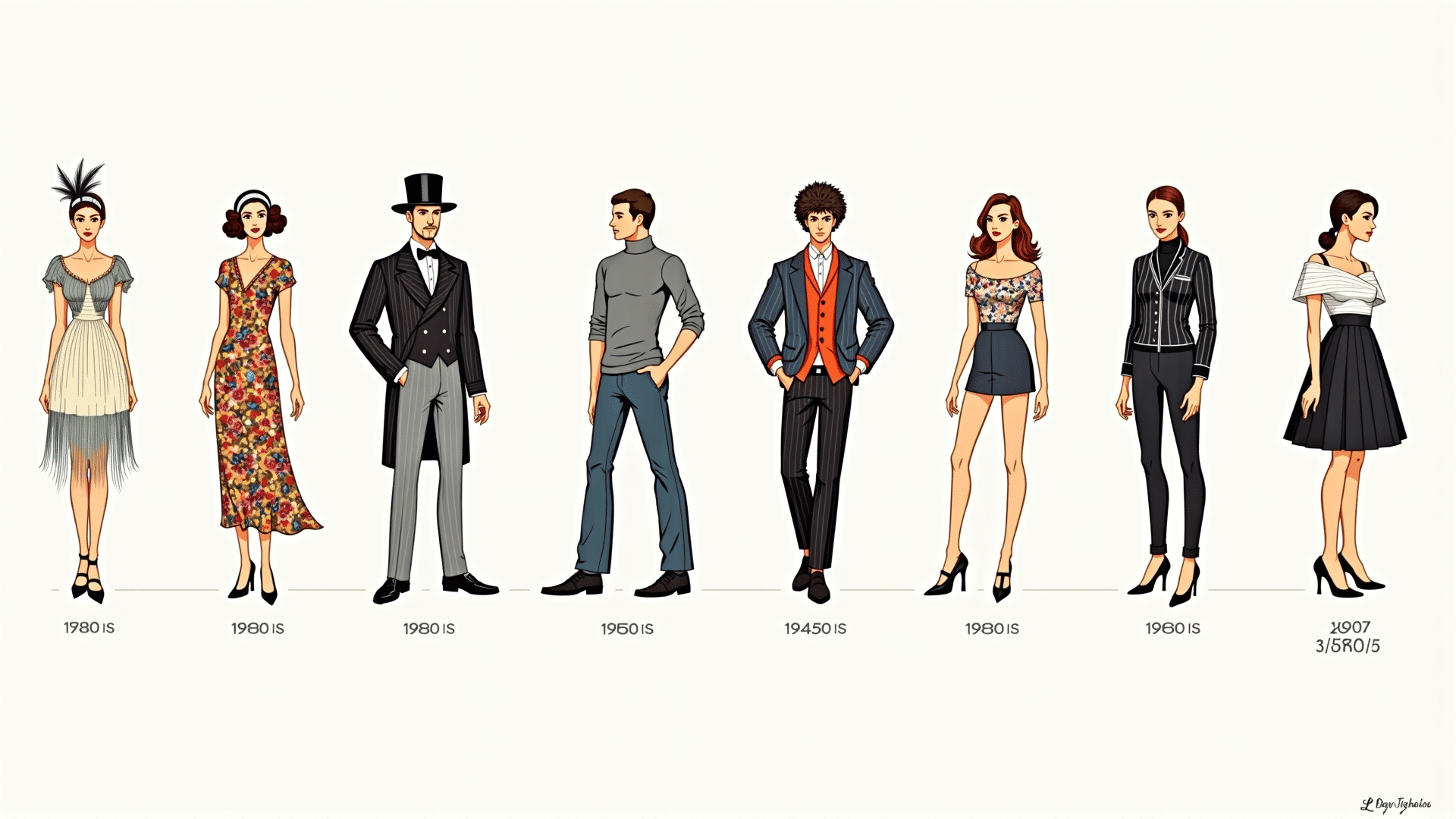Fashion is a powerful mirror reflecting the evolution of society across the centuries. Just as culture and technology have undergone significant transformations, clothing styles have also shifted, adapting to the changing tides of history. Throughout the ages, fashion has been a canvas for expression, cultural values, and identity, with each era marked by unique trends.
The journey through time begins in the extravagant opulence of the Renaissance, where clothing was characterized by its rich fabrics and intricate patterns. During this period, fashion was a testament to one's social status, with sumptuously embroidered garments and luxurious materials like silk and velvet favored by the elite.
Fast forward to the 18th century, which saw the emergence of Rococo style. This era was defined by delicate pastels, ruffles, and elaborate wigs. Fashion took a romantic turn with its feminine silhouettes, embodying the elegance and artistry of the period. The gowns worn by women were flowing, and the embellishments were a reflection of artistic beauty.
The 19th century ushered in an era of dramatic change, marked by the influence of the Industrial Revolution. Clothing became more accessible as mass production took hold. The latter part of the century brought with it the Victorian era, defined by modesty and structure. Corsets achieved the desirable hourglass figure, while formal attire became the standard for both everyday life and social events.
The 20th century was a whirlwind of rapidly changing styles. In the 1920s, the flapper movement broke the mold with shorter hemlines and looser fits. This era celebrated freedom and bold self-expression. Fast forward to the 1960s, a time known for revolutionary fashion, with its vivid colors and daring patterns that mirrored the social movements of the time.
By the 1980s, fashion became exuberant, characterized by vibrant tones, exaggerated silhouettes, and a strong sense of individualism. The influence of music was evident, as pop culture icons began to dictate popular trends, breaking away from traditional norms.
Entering the 21st century, fashion has become more inclusive and diverse, embracing a global influence. Sustainability and ethical practices have become significant themes, highlighting a collective shift towards mindful consumption. Technology has also played a pivotal role, with digital platforms allowing for an unprecedented reach and exchange of inspiration worldwide.
Reflecting on these rich traditions and innovations reveals how fashion is not just about attire but a dynamic expression of the times. Each piece, fabric, and design is woven into the broader tapestry of human history, proving that the threads of fashion have always been, and will continue to be, interconnected with the narrative of our world.
